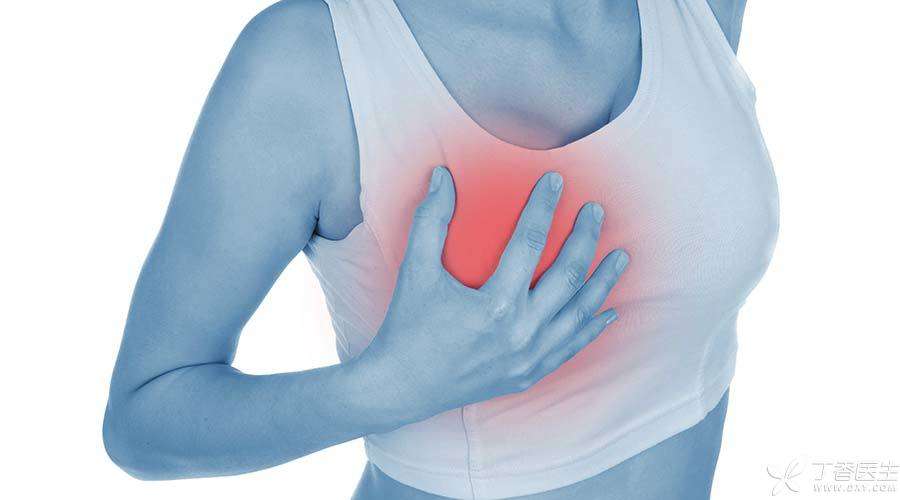
Nowadays, breast examination is becoming more and more popular because people know more and more about breast diseases.
Breast cancer is the malignant tumor with the highest incidence rate among women. In our country, almost 4 breast cancer patients can be found in every 10,000 women, which is quite a lot.
In addition, hyperplasia of mammary glands, fibroma of mammary glands, acute mastitis of nursing mothers, etc. are also common breast diseases, causing troubles to women.
Therefore, there is basically a breast examination in the physical examination package now, either B-ultrasound or molybdenum target X-ray? Which is more accurate? Which is safer? How do you choose?
Before the age of 40, breast B-ultrasound is usually selected.
Everyone is no stranger to B-ultrasound, It judges whether human tissues are normal according to the intensity of echo. Moreover, ultrasound can also observe the blood flow of tissues and the condition of nearby lymph nodes to help infer the benign and malignant tumor. Moreover, it is more suitable for examining breast with relatively high density, so it is especially suitable for young women with relatively dense breast.
What is important is that B-ultrasound is a kind of sound wave, non-invasive, non-radiation and other injuries, which will not cause harm to human body, has very high safety and relatively low price, and can basically make an appointment for examination in ordinary hospitals without waiting for too long.
However, the disadvantage is that it is not sensitive enough to early lesions and microcalcifications, the detection rate is low, and the accuracy is not high. Therefore, if abnormalities are found in B-ultrasound examination, further other examinations are needed.
Therefore, breast B-ultrasound is mainly used to examine breast space-occupying diseases, especially for young women’s breast fibroadenoma, breast cyst and hyperplasia of mammary glands. If these diseases are suspected, B-ultrasound should be used first instead of molybdenum target.
High-risk groups can directly choose mammography.
However, if the woman has some unusual high-risk factors, she can directly do mammography, or B-ultrasound + mammography, and if necessary, she can also do mammography.
Which are the high-risk groups for breast cancer?
The definition of high-risk population by China Breast Cancer Professional Committee is:
(1) People with obvious genetic tendency of breast cancer. The closer the blood relationship between breast cancer patients and you is, the greater the possible genetic risk; If a BRCA gene mutation like Angelina Jolie is found, regular examination is the minimum.
(2) It has been found that there are moderate or severe atypical hyperplasia or lobular carcinoma in situ in breast ducts or lobules.
(3) Have had chest radiotherapy before.
Molybdenum target is selected for cancer screening after 40 years old.
Mammography is actually an X-ray and an electromagnetic wave with strong penetrating power. Due to the different absorption of X-ray by diseased tissues and normal tissues of the breast, images with different densities can be obtained, which can be used to diagnose diseases.
For Asian women over the age of 40, The accuracy of molybdenum target X-ray examination is high, In particular, the accuracy of micro calcification foci is relatively high, and lymph nodes in the breast can be seen, which can find relatively early canceration, so it is quite suitable. However, the disadvantage is that molybdenum target X-ray penetrates dense breast tissue poorly, and the higher the breast density, the harder it is to find pathological changes. Therefore, it is generally not recommended for young women to do molybdenum target X-ray examination.
Who needs molybdenum target examination?
(1) It is suitable for women over 40 years old to carry out cancer prevention screening. It is not recommended for women under 40 years old who have no clear high-risk factors for breast cancer or no abnormalities found in clinical physical examination.
(2) If it is a high-risk group for breast cancer, mammography should be done every year after the age of 20.
The radiation risk of molybdenum target is negligible.
Molybdenum target X-ray examination will have some rays, but the radiation dose is low and will not cause harm to health.
How safe is it?
For example, everyone knows that smoking is harmful to health. Continuous long-term smoking can be considered as harmful to health by smokers, but what if you only smoke one cigarette a year? Is the harm caused almost negligible?
By the same token, doing molybdenum target X-ray once a year will not affect health, not to mention the dose of radiation is within the prescribed safe range.
Summary of Routine Examination of Breast Diseases
All you have to do is remember the following
1. Age < 40 years old: Manual examination + B-ultrasound is the first choice. If there are suspicious lesions, molybdenum target X-ray can be added.
2. Age ≥ 40 years old: manual examination + molybdenum target X-ray + B-ultrasound is preferred (dense breast should be combined with B-ultrasound examination);
3. If it is a high-risk group for breast cancer, the age of molybdenum target X-ray cancer prevention examination should be appropriately advanced, instead of waiting until 40 years old, and a doctor can be consulted for details.
